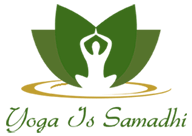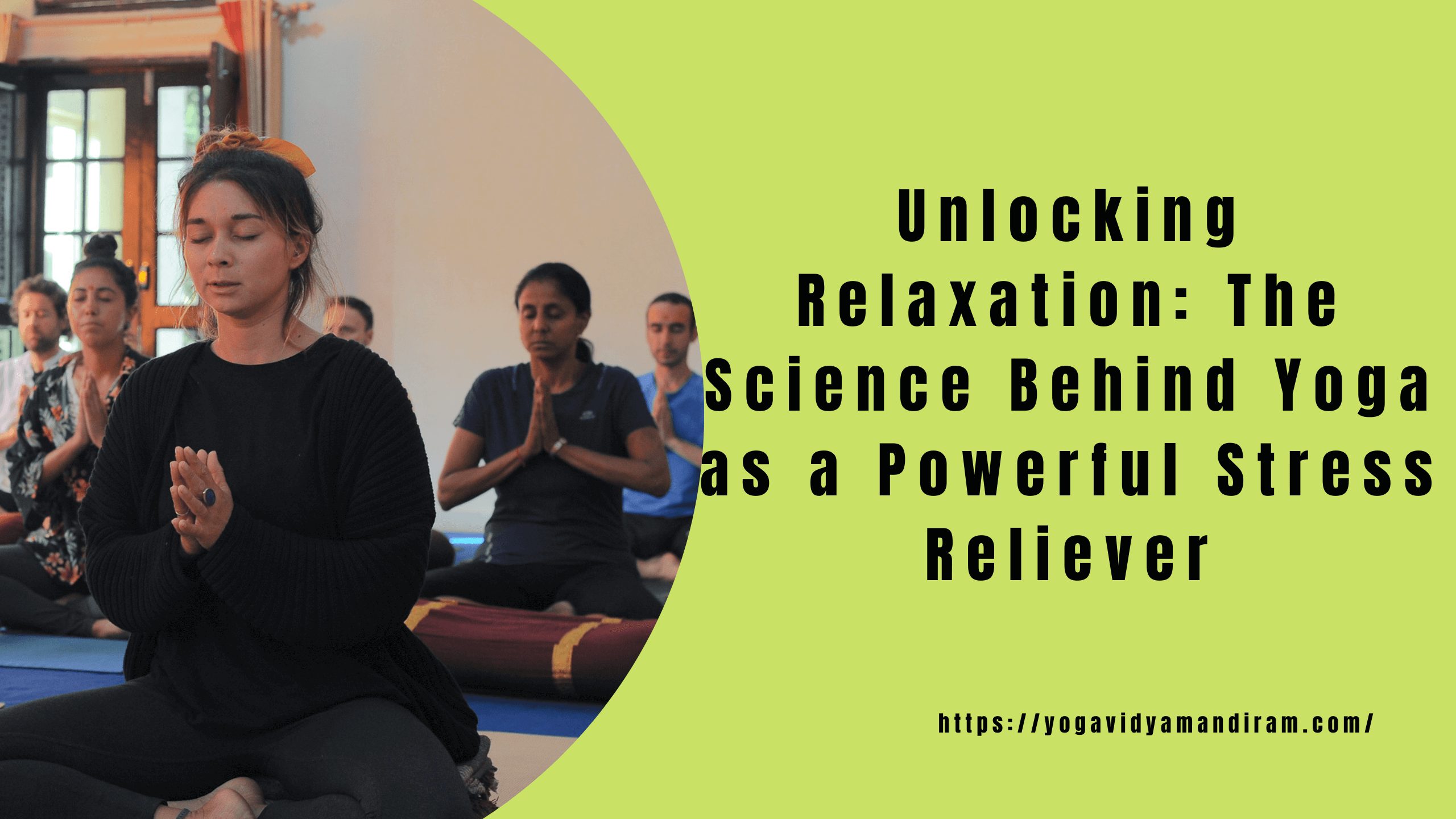In today’s fast-paced world, where the demands of work and life can feel overwhelming, finding a moment of peace can seem like an impossible task. Enter yoga—a practice that transcends mere physical exercise to unlock a deeper realm of relaxation and inner tranquility. But what is it about those flowing movements and mindful breaths that makes yoga such a powerful antidote to stress? In this blog post, we’ll delve into the fascinating science behind yoga as a stress reliever, exploring how ancient traditions align with modern research to reveal its profound effects on our minds and bodies. Whether you’re a seasoned yogi or just curious about this age-old practice, get ready to discover how embracing the mat can pave your path toward serenity in an increasingly chaotic world!
Introduction to Yoga and its benefits for stress relief
In today’s fast-paced world, stress seems to lurk around every corner. From the constant buzz of notifications to the pressures of daily responsibilities, it can feel overwhelming at times. However, there is a powerful antidote that has been practiced for centuries: yoga. This ancient discipline does more than just improve flexibility; it offers a sanctuary from chaos and a pathway to inner peace.
Yoga for stress relief combines physical postures with mindful breathing techniques, creating an oasis where you can unwind and reconnect with your body and mind. But what makes yoga such an effective remedy against stress? Let’s explore the fascinating science behind relaxation and uncover how this holistic practice truly transforms our responses to life’s challenges.
Understanding the Science Behind Relaxation and Stress
Stress is a complex response rooted deeply in our biology. When faced with challenges, the body activates the “fight or flight” mechanism. This triggers a cascade of hormones, notably adrenaline and cortisol.
These chemicals prepare us to react swiftly but can also lead to anxiety when released in excess. Chronic stress keeps these levels elevated, creating a cycle that harms both mind and body.
Understanding this response highlights why relaxation techniques are essential. They help counterbalance this hormonal surge by promoting calmness and reducing tension.
Research shows that practices like yoga significantly lower cortisol levels while enhancing mood through endorphin release. Engaging with these methods not only soothes immediate stress reactions but fosters resilience against future anxieties as well.
Science reveals an intricate dance between our physiological responses and emotional states, emphasizing how vital it is to cultivate environments that encourage tranquility amidst life’s inevitable pressures.
How Yoga Affects The Brain and Nervous System
Yoga has a profound impact on the brain and nervous system. When practiced regularly, it promotes neuroplasticity—the brain’s ability to adapt and reorganize itself. This can enhance cognitive functions like memory and focus.
The practice of yoga also activates the parasympathetic nervous system, which is responsible for rest and relaxation. This shift reduces levels of cortisol, the stress hormone, leading to a calmer state of mind.
Additionally, mindfulness during yoga helps in regulating emotions. By fostering awareness in each pose, individuals learn to respond rather than react to stressors.
Research indicates that consistent yoga practice increases gray matter density in areas related to emotional regulation and self-awareness. Such changes empower practitioners with better tools for managing anxiety.
As your body moves gracefully through various asanas, your brain engages deeply—creating a harmonious balance essential for overall well-being.
The Role of Breathing Techniques in Stress Reduction
Breathing techniques are a cornerstone of yoga, enhancing its effectiveness for stress relief. Controlled breathing can activate the body’s relaxation response, counteracting the fight-or-flight mechanisms triggered by stress.
When you focus on your breath, it anchors you in the present moment. This mindfulness helps to quiet racing thoughts and reduce anxiety levels. Techniques like diaphragmatic breathing encourage deeper inhalations and slower exhalations, fostering a sense of calm.
Incorporating specific patterns—such as inhaling for four counts and exhaling for six—can further promote relaxation. These practices stimulate the vagus nerve, lowering heart rate and blood pressure.
Whether you’re in child’s pose or seated meditation, prioritizing your breath transforms your experience on the mat. It becomes not just an exercise routine but a powerful tool for managing daily stressors effectively.
Physical Benefits of Yoga on the Body’s Response to Stress
Yoga enhances the body’s resilience to stress through a range of physical benefits. It promotes flexibility and strength, allowing for better posture and alignment. Improved posture can alleviate tension in areas like the neck and shoulders, which often bear the brunt of stress.
Regular practice helps regulate cortisol levels—the hormone linked to stress. Lowering these levels contributes to a calmer state of mind. Additionally, yoga encourages blood circulation, delivering more oxygen to vital organs and tissues.
The combination of gentle stretching and controlled movements reduces muscle stiffness. This relief not only feels good but also decreases overall discomfort caused by accumulated tension.
Engaging in poses that open up the chest improves breathing capacity. A deeper breath can lead to a sense of peace amid chaos, making it easier for individuals to navigate daily challenges with greater ease.
Incorporating Mindfulness and Meditation into Your Yoga Practice
Incorporating mindfulness and meditation into your yoga practice can elevate the experience. This integration allows you to connect deeply with each pose, fostering a sense of awareness.
Start by focusing on your breath as you transition between poses. Notice how it feels to inhale and exhale, grounding yourself in the present moment. This simple act can significantly enhance relaxation.
Try setting an intention at the beginning of your session. Whether it’s letting go of stress or cultivating gratitude, intentions guide your energy throughout the practice.
Consider dedicating a few minutes after yoga for seated meditation. Allow thoughts to come and go without judgment while reflecting on what you’ve experienced during your flow.
With consistent practice, these techniques create a tranquil mental space that helps manage daily stressors effectively. Embrace this holistic approach for deeper relaxation and clarity as you navigate life’s challenges effortlessly.
Tips for Starting a Yoga Routine for Stress Relief
Starting a yoga routine for stress relief can feel daunting, but it doesn’t have to be. Begin with short sessions. Even 10 minutes of focused practice can make a difference.
Choose a comfortable space where you won’t be disturbed. This environment sets the tone for relaxation and mindfulness.
Try various styles to find what resonates with you. Hatha and restorative yoga are excellent options for beginners seeking calmness.
Use online resources or apps that offer guided classes tailored to stress relief. These tools provide structure without overwhelming you.
Incorporate breathing exercises into your practice. Deep, intentional breaths help ground your mind and body in moments of tension.
Remember to listen to your body throughout each session. Yoga is about personal growth, not perfection. Embrace the journey at your own pace while nurturing inner peace.
Real Life Success Stories: Personal Experiences with Using Yoga as a Stress Reliever
Sarah, a busy marketing executive, found herself overwhelmed by deadlines. After trying yoga for the first time at her local studio, she noticed an immediate shift in her mood. The calming flow of movements allowed her to escape the chaos of work.
Then there’s Mark, a father of three who struggled with anxiety. He began practicing yoga in his living room after putting the kids to bed. With each session, he felt lighter and more centered. It became his sanctuary amidst family responsibilities.
Emily was skeptical initially but decided to join a community class on a whim. She quickly learned that incorporating breathing exercises transformed not only her physical health but also how she approached stressors daily.
These personal stories illustrate how diverse paths can lead to similar peace through yoga practice—each journey unique yet united by shared relief from stress.
Conclusion: Embracing the Power of Yoga for a More Relaxed Life
Yoga offers a pathway to tranquility that many seek in today’s fast-paced world. By delving into its practices, you unlock not just physical benefits but also mental clarity and emotional stability. The science supporting yoga’s effectiveness for stress relief is compelling; it shows how deeply interconnected our bodies and minds truly are.
Embracing yoga as part of your routine can lead to profound changes. Stress management becomes more attainable through the combination of mindful breathing, gentle movement, and focused relaxation techniques. Each session encourages you to reconnect with yourself and cultivate a sense of peace amidst chaos.
Real-life experiences reveal the transformative power of yoga in tackling stress head-on. Many have found solace on their mats, discovering tools that equip them for life’s challenges beyond the studio walls.
Integrating even small doses of yoga into your daily life opens doors to greater well-being. As you explore this practice further, remember that each breath taken during your sessions is an opportunity to release tension and invite calmness back into your life.
Embrace these teachings fully—let them guide you toward a state where relaxation isn’t just fleeting but becomes a lasting part of who you are. Your journey with yoga for stress relief can be as unique as you are; all it takes is the first step onto the mat.



Leave a Reply